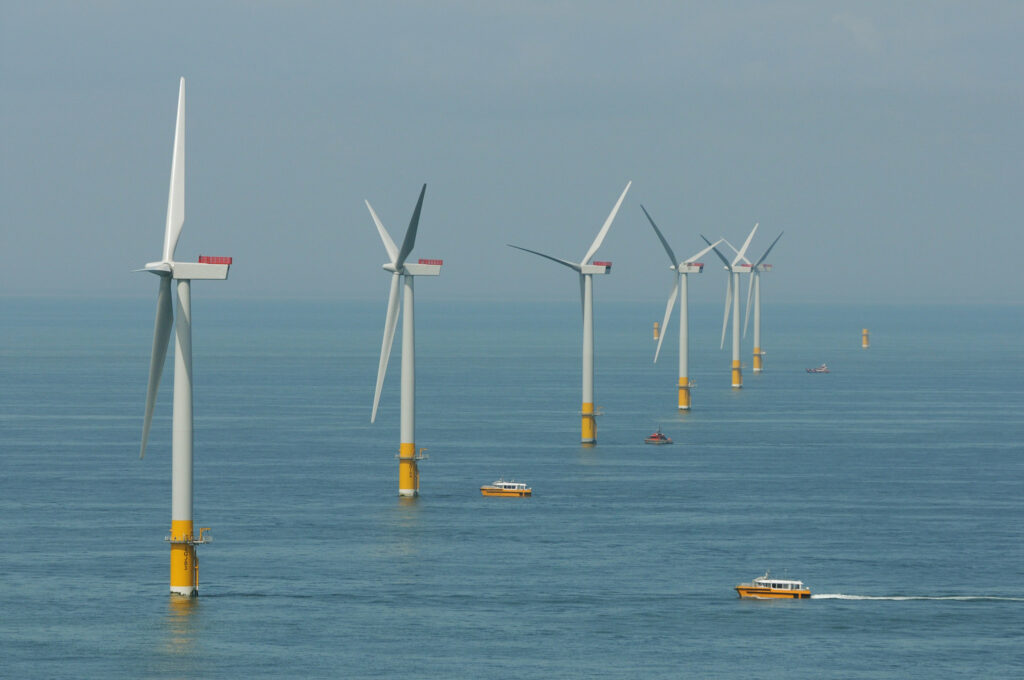The energy generated by offshore wind farms in the UK is getting so cheap that it could soon reduce household energy bills, according to a new study. This could be a tipping point for renewable energy, as it becomes cheaper than fossil fuel energy.

Renewable energy projects in the UK have been long been subsidized by the government, leading to complaints that clean energy is ramping up household bills. However, the most recently approved offshore wind projects will likely work with so-called negative subsidies, paying money back to the government and still reducing bills, a study by Imperial College researchers showed
“Offshore wind power will soon be so cheap to produce that it will undercut fossil-fuelled power stations and maybe the cheapest form of energy for the UK. Energy subsidies used to push up energy bills, but within a few years, cheap renewable energy will see them brought down for the first time. This is an astonishing development,” said lead researcher Malte Jansen in a press release.
Energy companies that participate in the auction state the price at which they are willing to sell the energy they produce to the government. Last year, the UK made a record auction in which companies offered to build offshore wind farms for around 40 pounds ($51) megawatt-hour of power, 30% cheaper than two years earlier. While this was impressive, researchers and policymakers back then could only speculate the actual implications of this.
In their study, researchers looked at future electricity price trends and found that the contracted price is very likely to be below the UK wholesale price over the lifetime that these wind farms would produce electricity.
The wind farms are likely to be built and run with these costs since financing is now accessible at lower costs for such projects. The study also looked at other offshore wind auctions held by governments in five other European countries. They found that Germany and the Netherlands have seen some zero-subsidy offshore wind farms winning auctions, but that the UK projects are likely to be the world’s first negative-subsidy offshore wind farms.
“This amazing progress has been made possible by new technology, economies of scale and efficient supply chains around the North Sea, but also by a decade of concerted policymaking designed to reduce the risk for investing in offshore wind, which has made financing these huge billion-pound projects much cheaper,” said Iain Staffel, lead author, in a press release.
The researchers argued that the price of offshore wind has fallen so fast in the UK mainly because of technology development, as the country is building larger wind turbines further out at sea. Larger turbines can exploit more wind energy and have access to more consistent wind speeds at higher altitudes. The success of UK offshore wind farms, which are now primarily built in the Dogger Bank region of the North Sea, means the UK has considerable skills and expertise than can be exported around the world, the researchers argued.
This could lead to more ambitious projects, such as producing hydrogen fuels using the wind power on-site, out at sea, researchers say.
“These new wind farms set the stage for the rapid expansion needed to meet the government’s target of producing 30 percent of the UK’s energy needs from offshore wind by 2030. Offshore wind will be pivotal in helping the UK, and more broadly the world, to reach net-zero carbon emissions with the added bonus of reducing consumers’ energy bills,” said Staffel.
However encouraging this development is, it should be noted that cheaper renewable energy is only part of the puzzle. If we want to achieve a sustainable future and a reasonable climate, we have to make sure that this energy isn’t added on top of fossil fuel energy. In other words, using cheap wind energy is great — but we also need to make sure that the oil, coal, and gas stay in the ground.






